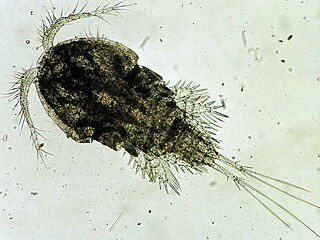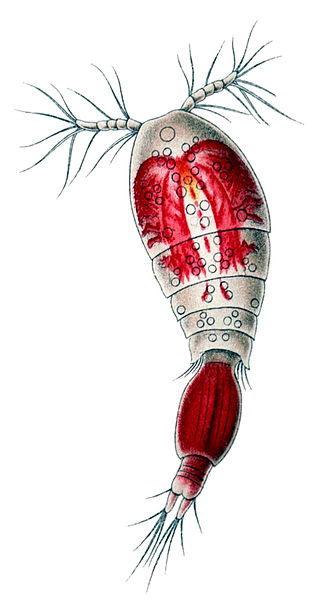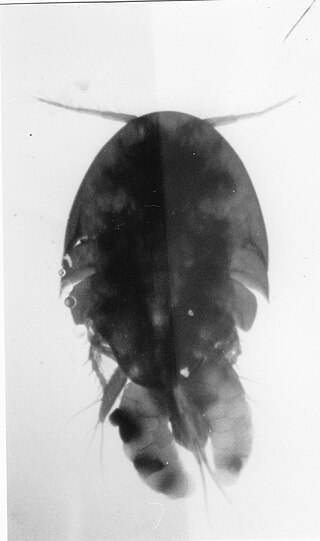
The Cyclopoida are an order of small crustaceans from the subclass Copepoda. Like many other copepods, members of Cyclopoida are small, planktonic animals living both in the sea and in freshwater habitats. They are capable of rapid movement. Their larval development is metamorphic, and the embryos are carried in paired or single sacs attached to first abdominal somite.

Calanidae is the largest taxonomic family of calanoid copepods. It includes the genus Calanus, which may be the most abundant metazoan genus on Earth.
Arctodiaptomus is a genus of copepods in the family Diaptomidae.

Epischura is a genus of copepods in the family Temoridae.
Hemidiaptomus is a genus of freshwater copepods in the family Diaptomidae, containing the following species:
Thermodiaptomus is a genus of copepods in the family Diaptomidae, containing the following species:
Tropocyclops is a genus of copepod crustaceans in the family Cyclopidae. It contains the following species:

The Cyclopidae are a family of copepods containing more than half of the 1,200 species in the order Cyclopoida in over 70 genera.

Canthocamptidae is a family of copepods. Most of the 700 species are confined to fresh water, although there are also marine species. It contains the following genera:

Oncaea is a genus of copepods. The genus contains bioluminescent species. Unlike other bioluminescent copepods, Oncaea have an internal (non-secreted) bioluminescence. Oncaea contains the following species:

Clausidiidae is a family of parasitic copepods of the suborder Poecilostomatoida, containing the following genera:
Clausiidae is a family of parasitic copepods of the suborder Poecilostomatoida, comprising the following genera:
Megacyclops is a genus of copepods, containing the following species:
Centropagidae is a family of copepods. Its members are particularly known as plankton in coastal waters and in fresh water in Australia and southern South America. They are also found on subantarctic islands and in lakes in Antarctica.
Phaennidae is a family of planktonic copepods, found in pelagic or benthopelagic waters. It contains the following genera:

Temoridae is a family of copepods, containing the following genera:

Euaugaptilus is a genus of copepods. The genus contains bioluminescent species.
Augaptilidae is a family of copepods.

Eurytemora is a genus of copepods in the family Temoridae. The World Register of Marine Species lists the following species:
Arietellidae is a family of copepods belonging to the order Calanoida.








